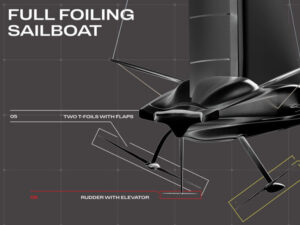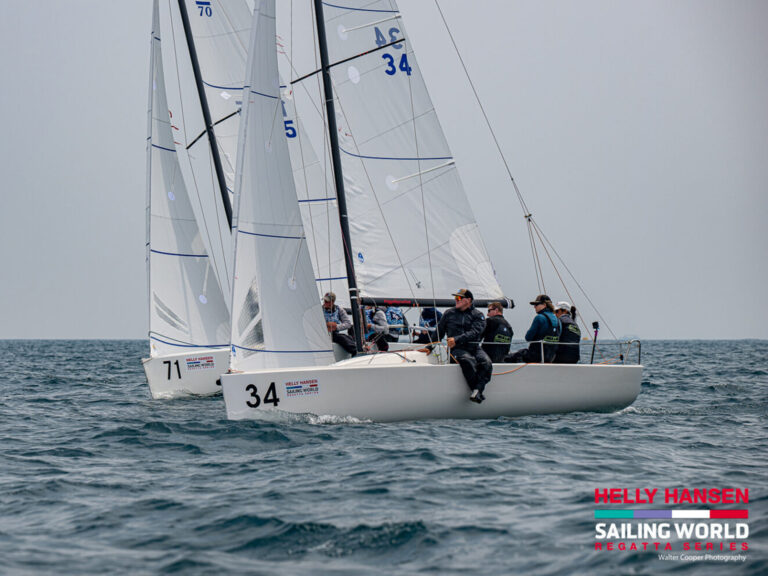In an unassuming industrial building just a short distance from London’s Heathrow airport, new ground is being broken in the world of high-performance sailing.
Within Artemis Technologies’ facility lies a complex and sophisticated, fully articulating sailing simulator that is allowing designers, engineers and sailors to shape the sport’s future like never before. Based on a similar physical platform to that used for flight and motor racing simulators, Artemis’ system, currently optimized for SailGP, uses a full size, identically kitted out carbon cockpit from the new F50 foiling catamarans. The controls and their layout are equal to that in the real machine and can carry three of the five crew members – namely the helmsman, wing trimmer and pilot who controls ride height of the highly advanced race yacht.

Surrounded by a giant, 270-degree wraparound screen and a sound system to match, the result is a highly realistic environment. Indeed, so much so that national teams have each been spending an intense three-day session on the simulator as they learn how to handle the new flying beasts in real-time ahead of the SailGP competition that starts in Sydney in February 2019.
In keeping with the new generation of foiling cats, the ride can be wild. Indeed, the motion is so representative and potentially so violent, that crews have to wear safety harnesses and crash helmets when aboard.
The France SailGP Team is among the most recent to have completed a session aboard the simulator. Its helmsman, Billy Besson, is no stranger to high-performance cats, having taken four world championship titles in the Nacra 17, an Olympic-class catamaran sailed by a two-person crew.
“It is incredible,” Besson said, “this is allowing us to get a feel for a new boat in a way that hasn’t been possible before.”
Just like aviation and motor sport simulators, the system and the visual environment that surrounds it is driven by complex computer systems.
“Developing this simulator started with technology that had come out of the last America’s Cup,” said lead engineer Jonathan Nicols. “But until now, no one had created an environment like this where all the elements of sail control, boat control and physical motion were working together.
“Even at its most fundamental level, the simulator saves a huge amount of time for teams learning to sail these extreme machines, but for the designers and engineers who have been working on creating the new breed of boats down in New Zealand, the ability to run and test systems on the simulator overnight, during the UK daytime, has proved key in the efficient development of the F50.” So, while the new breed of F50 foiling cats takes racing into exciting new territory afloat, to do so has meant raising the bar ashore.









